Hands-on: Panasonic announces super-fast Leica 25-50mm f/1.7 Micro Four Thirds lens
posted Wednesday, July 7, 2021 at 10:00 PM EDT
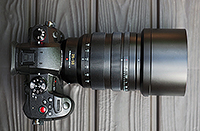
Announced as "in development" back in May alongside the Lumix GH5 Mark II and forthcoming GH6, Panasonic's latest Micro Four Thirds lens, the LEICA DG 25-50mm f/1.7 Vario-Summilux, is here in full. As noted in the development announcement, this new Panasonic-Leica fast-aperture zoom lens is designed complement the earlier 10-25mm f/1.7 Leica DG Vario-Summilux lens. The two lenses share the exact same overall size, shape and design as well as nearly identical weights. As a pair, this allows the two lenses to be easily swapped back and forth as needed, which is particularly useful in video production scenarios where follow-focus gears and similar accessories are used on each lens as well as for camera balance and weight -- an important factor when using jibs, gimbals and similar devices.
Together with the 10-25mm f/1.7 lens, the new 25-50mm sibling provides Micro Four Thirds shooters with a constant f/1.7 aperture performance with a focal length range spanning 20mm-eq. all the way out to 100mm-eq. It's a very versatile range that's condensed down into just two lenses. Both lenses are designed for video and stills and are well-suited for various use-cases, from landscapes and astrophotography to portraiture and general low-light shooting -- and really any kind of photographic pursuits where you want a shallow depth of field, good subject isolation and smooth, pleasing bokeh.
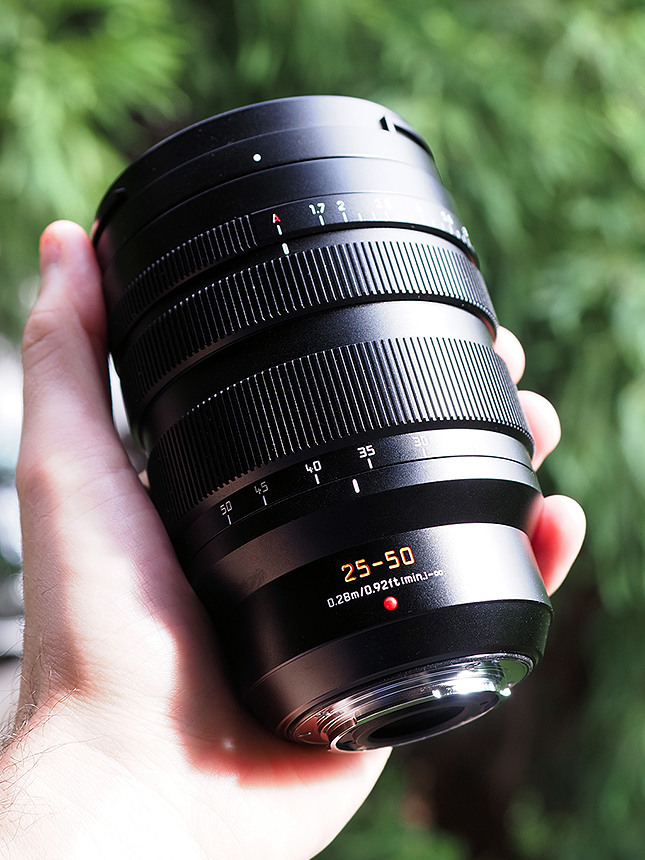
We were fortunate to get a brief, early hands-on look at the new 25-50mm f/1.7 lens, and in addition to hands-on field notes below, we also have a selection of real-world gallery images for your perusal. (Note: the gallery images shot so far were taken with the Olympus E-M1 III; our Panasonic GH5 II, the new Lumix camera we have in-house, is still running pre-production firmware. We plan to flesh out the lens gallery with additional shots once the GH5 II is updated.)

50mm, f/1.7, 1/250s, ISO 200, -0.7EV
Design & Handling
As mentioned, the Panasonic 25-50mm f/1.7 utilizes a nearly identical design to the earlier 10-25mm lens. It's essentially the exact same lens from an exterior standpoint but with a different focal length range. Physical dimensions and weight are nearly identical, with the 25-50mm f/1.7 having a maximum diameter of 87.6mm (3.45 in.), a length of about 127.6mm (5.02 in.). and a weight of around 654g (1.44lbs). There's an ever-so-slight difference in weight (654g vs 690g on the wider lens), but essentially these two lenses are physically the same from a handling and usability standpoint.
For still photographers, having physically similar lenses might not be such a high-priority feature or something critically important for day-to-day use, but in the video world, it can make a difference in time and convenience. Often, video camera setups are complex, with many additional components mounted to the camera rig itself. In particular, accessories such as follow-focus gears and zoom gears require adjustments between different lenses. By having matching lenses, with their zoom and focus rings in the same location, it's easier for the cinematographer to swap lenses more quickly without having to adjust the follow-focus and other geared accessories. Further, when using weight- or balance-sensitive camera rigs, such as jibs or gimbals, having similarly-sized lenses, again, makes it easier to swap optics as needed without having to recalibrate the rigs.
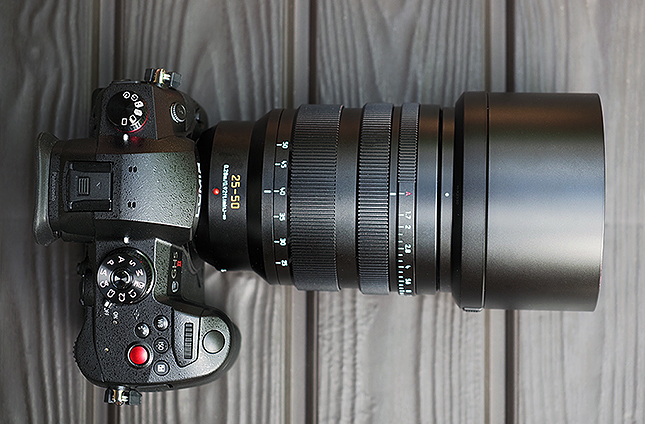
In the hand, the Panasonic 25-50mm f/1.7 lens is a very solid, well-built lens that's also surprisingly lightweight despite its somewhat chunky and hefty-looking shape. The lens uses 77mm-sized screw-on filters and feels more akin to a full-frame lens than the usual tiny and light Micro Four Thirds lenses one might be used to seeing. Still, despite the visual appearance of a large lens, it feels pleasingly lightweight in the hand, and it was very easy to carry around and shoot with for long periods.

42mm, f/1.7, 1/500s, ISO 200
Both the zoom ring and focus ring spin with firm yet pleasingly smooth rotation. Both rings have a good amount of resistance and don't feel easy to bump or move accidentally. The zoom ring, in particular, feels very precise and smooth to rotate. With a zoom range of just 25mm to 50mm, there's not a huge amount of rotation needed to go through the full range of focal lengths; only about 45 degrees of rotation. The zoom ring has focal length markings at 25mm, 30mm, 35mm, 40mm, 45mm and 50mm.
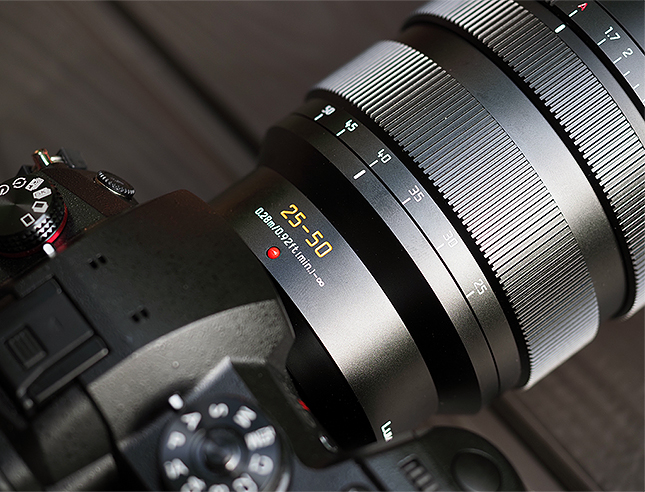
The focusing ring is thinner than the approximately 1-inch-long zoom ring and sits further out towards the front of the lens. As mentioned, it rotates very smoothly, but as with most mirrorless lenses, the ring will rotate indefinitely when in AF mode. The lens features a pull-back clutch mechanism to engage manual focusing mode, revealing markings for a focusing distance scale. In MF mode, the focusing ring has soft stops at either end; you feel "stops" at either end of the focusing range, but you can continue to rotate the ring past either end. The electronically-controlled focus ring can also be customized in the camera with a setting for either linear and non-linear focusing behavior.
Lastly, at the very end of the lens is a thin, manual aperture control ring. Seeing as the lens is likely to be used for more video purposes, the aperture does not have a "clicked" design and instead has a smooth iris control across its full range from f/1.7-f/16. There are markings for f/1.7 and then labeled whole-stop apertures along the ring as well as third-stop increments in between. The ring also has a soft-locking "A" (Auto) position, allowing the aperture to be controlled directly via the camera. In addition to its stepless aperture ring, the lens also has a micro-step drive system for the aperture diaphragm control itself, which Panasonic states allows for fast and smooth adjustments to the exposure changes while when panning or zooming.
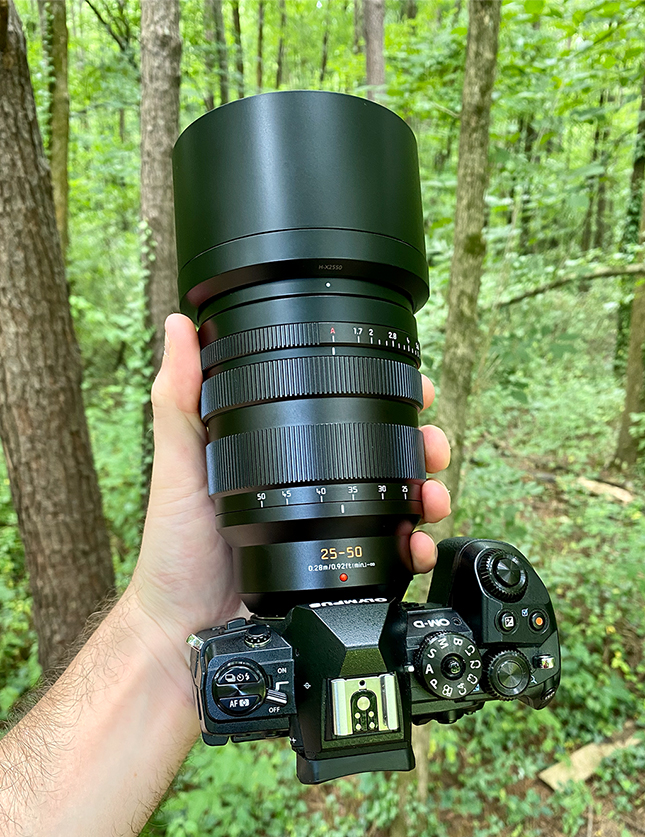
The lens doesn't include many other physical features, such as programmable lens functions buttons or focusing distance limiter switches (though the latter isn't usually common on lenses in this focal length range). There's no optical image stabilization in the lens, so any stabilization would come from body-based IS on the camera.
Lastly, the lens features thorough weather sealing, much like its sibling lens and most other Panasonic-Leica lenses, and is built to withstand dust, moisture and freezing temperatures down to -10-degrees C (14-degrees F).

25mm, f/1.7, 1/2000s, ISO 200
Optics & Image Quality
In terms of the particulars of the lens's optical layout, the Panasonic 25-50mm f/1.7 uses a total of 16 elements in 11 groups -- one fewer element than in the 10-25mm sibling lens. The 25-50mm f/1.7 lens includes a single aspherical lens element, three ED glass elements and one ultra-high-refraction (UHR) element.
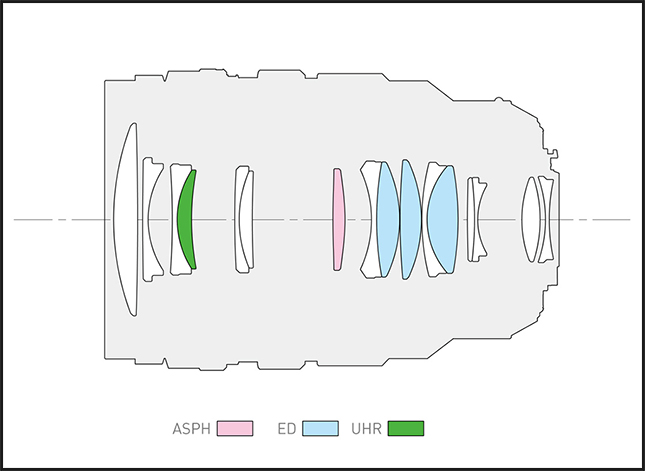
Together, these elements help suppress axial chromatic aberration and CA of magnification. The aspherical element also helps combat spherical aberration and distortion while also helping to ensure sharp image quality across the frame. The lens also features a 9-bladed circular aperture diaphragm for smooth, pleasing bokeh.
Focusing
The Panasonic 25-50mm, like its wider 10-25mm sibling, uses an internally-focusing design with a 240fps-compatible high-speed sensor drive motor. In use, the lens autofocuses both very quickly and nearly silently. Even when used on a non-Panasonic camera body (hence no DFD-assisted focusing), the lens was very fast and very precise with focusing in single-shot AF mode. The focusing mechanism is also designed to suppress focus breathing across the zoom range, once again making it an excellent lens for video recording.

41mm, f/1.7, 1/640s, ISO 200, -0.7EV
The lens is not a macro lens, but with a close focusing distance 0.28m (0.92ft) at 25mm and 0.31m (1.02ft) at 50mm, the lens can still focus close onto your subject. At 50mm, the lens offers a 0.21x (0.42x in 35mm eq.) magnification ratio.
Pricing & Availability
The Panasonic LEICA DG 25-50mm f/1.7 Vario-Summilux is scheduled to go on sale at the end of August with a retail price of $1,799.99 -- the same initial retail price as the 10-25mm lens.